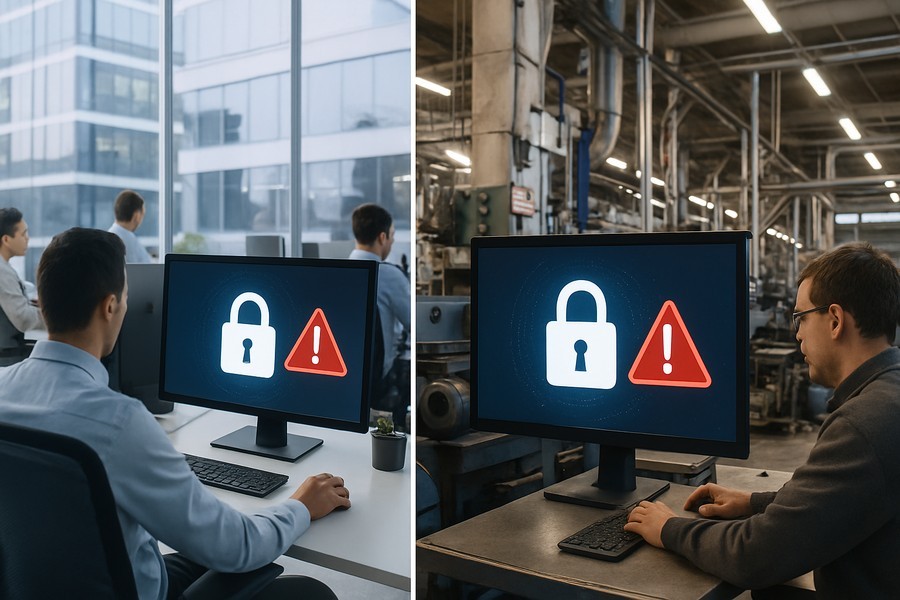
Ransomware Attacks Surge Across Multiple Industries
A recent surge in ransomware attacks is causing a stir, especially among businesses and manufacturing sectors. Surprisingly, however, there's been a decrease in these types of cyberattacks on government and healthcare organizations.
Breaking Down the Numbers
So far, there have been over 5,000 reported ransomware attacks, which is a 36% jump compared to the same time last year. The third quarter of the year alone saw a 6% increase in these attacks. However, not every industry is experiencing the same level of impact.
Industry-Specific Trends
While the education sector only saw a 5% increase in ransomware attacks, the healthcare sector actually experienced a 2% decrease. Government entities saw a more significant reduction in such attacks, with a 31% drop. However, businesses were not so lucky, witnessing an 11% uptick, particularly within the manufacturing industry.
Intriguingly, the third-party technology vendors have been a primary target for some of the most disruptive attacks in the last quarter. Notably, several high-profile attacks have caused havoc across European airports and disrupted operations in over 200 municipalities, affecting over a million people in one particular case.
Healthcare-Related Businesses in the Crosshairs
Interestingly, while direct attacks on the healthcare sector have declined, companies associated with healthcare, such as medical device manufacturers and pharmaceutical companies, have seen an influx of attacks. This shift in focus is believed to be because these companies can provide hackers with access to multiple healthcare organizations through a single source.
Distribution of Attacks
Among the confirmed attacks for the third quarter, businesses bore the brunt with 99 targeted attacks. Government entities, healthcare companies, and educational institutions followed with 35, 10, and 14 attacks, respectively. In contrast, unconfirmed attacks were overwhelmingly focused on businesses, with over 1,200 instances. The most active cybercrime groups included Qilin and INC, recording the highest number of confirmed attacks at 40 and 12, respectively. The data loss across all these attacks was staggering, with over 335 terabytes reported stolen.
Ransomware Attacks: The Financial Toll
The average ransom demanded across all attacks was a whopping US$3.57 million. In one instance, a cybercriminal group demanded a record $15 million from a government department. However, the department confirmed that only its website was defaced, with no servers accessed.
Healthcare Sector: A Slight Reprieve
In the third quarter, the healthcare sector saw a 14% decrease in ransomware attacks. Of the 78 reported attacks, only 10 were confirmed. Nevertheless, the average ransom demanded still remained high at $844,500. Despite the decline, the sector has seen nearly 300 attacks so far, which is roughly at par with the number of incidents recorded during the same period last year.
Business Sector: An Upward Trend
Businesses continue to be a favorite target for cybercriminals, with a noticeable 11% increase in ransomware attacks from the second to the third quarter. The manufacturing industry remains the most targeted sector, with a 13% increase in attacks.
Healthcare-Related Businesses: A Rising Threat
Companies operating within the healthcare sector but not providing direct patient care, such as medical billing providers and healthcare device manufacturers, have seen an increase of over 60% over the last quarter. These businesses are becoming increasingly attractive targets for hackers due to the number of individual healthcare organizations they deal with.
Attack Claims and Data Loss
Cybercrime groups Qilin, Akira, INC, and Play have claimed the most attacks in the third quarter. However, Qilin and INC have had the most confirmed attacks, with 40 and 12 respectively. One particular attack on an IT company resulted in around a million people being impacted.
Another cybercrime group claimed the second-largest attack, with over 900,000 records breached at a healthcare company. The group INC allegedly stole the most data, with a total of 45.4 TB. However, the actual figure could be much higher, as the group does not always reveal the amount of data stolen in its attacks.
